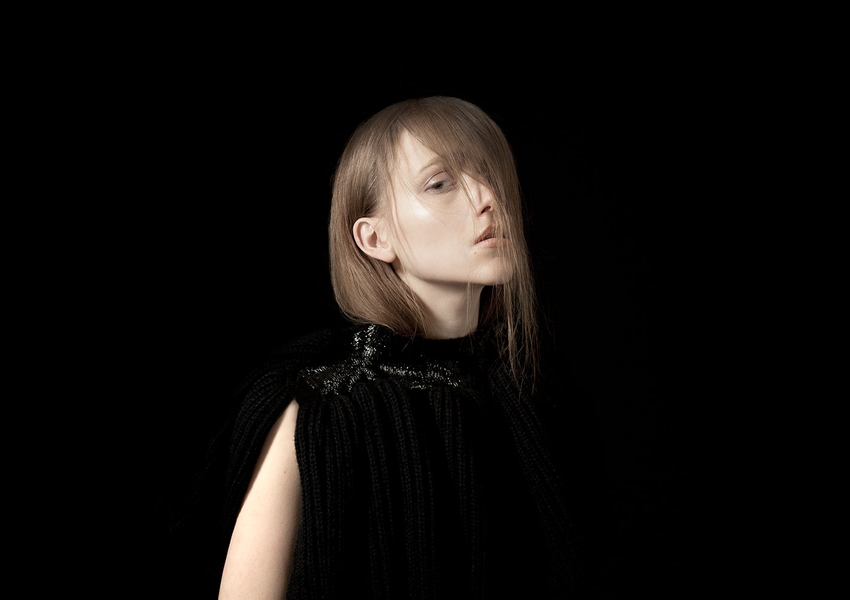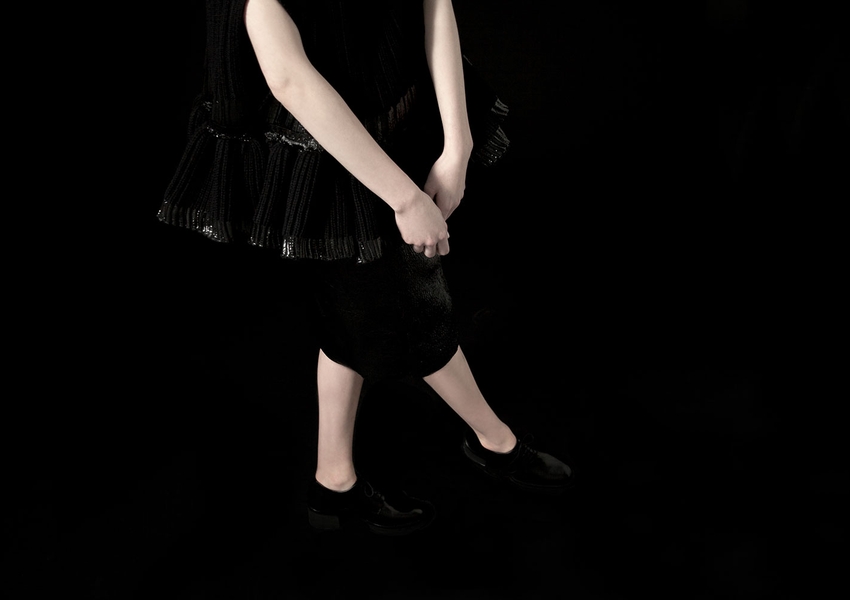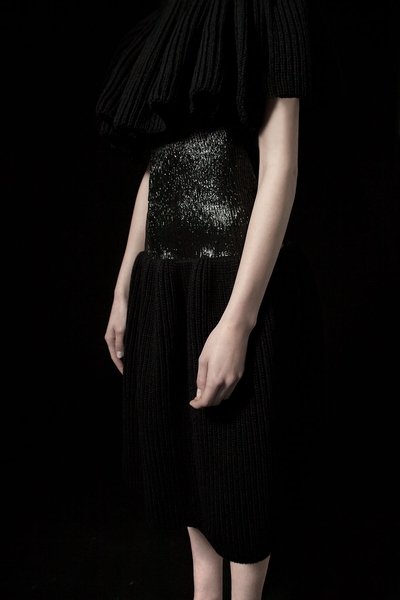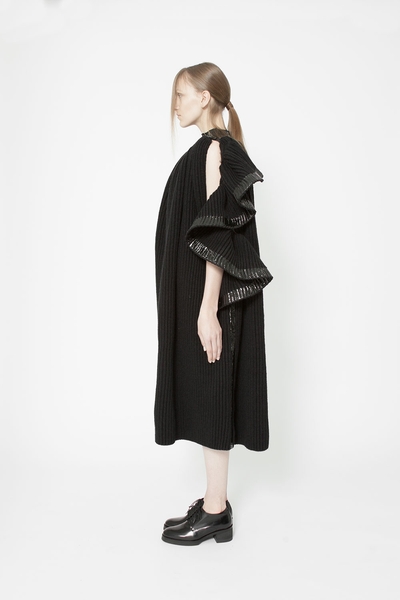Inga Nemirovskaia / Teresa Präauer
Women's wear
Inga Nemirovskaia / Teresa Präauer
The Sunday Black Beauty Left read by Christoph Dostal
Designer
Inga Nemirovskaia
Inga Nemirovskaia specialises in high quality, innovative knit design. Born in Ukraine and raised in Austria, Nemirovskaia currently lives and works between the two cities of London and Vienna. In 2012 she achieved her BA at the Arts University Linz in cooperation with the Fashion School Hetzendorf in Vienna. Thereafter she decided to move to London to pursue her MA in Fashion Knitwear at Central Saint Martins College of Art and Design, which she successfully completed in 2014. Nemirovskaia has been awarded a number of prizes for her work, including the J-Crew – MA Fashion Cashmere Project, and the Fashion prize of the Federal Chancellery of the Republic of Austria. She has gained work experience at Peter Pilotto in London, Lala Berlin as well as Prag PR in Berlin. This exhibition presents a selection of Nemirovskaia’s knitted outfits which were produced as part of her MA collection. Her strong interest in research and hands on approach to the making process – each garment is created by hand and with the use of domestic knitting machines in her own studio – lend the work by Nemirovskaia both originality and depth. While constantly in search of new textile technologies and processing ideas, a fascination for the female silhouette and the play between proportions and volume remains an essential part of all her designs and creative ethos.
Teresa Präauer is an Austrian born author and fine artist currently living in Vienna. As a trained painter, she lent her hand to illustrating a children’s book in 2010, after which she published her prose debut in 2012. Her novel ‘For the Rulers from Overseas’ was met with accolades and received the prestigious aspekte Literature Prize. Her brand new second novel ‘Johnny and Jean’ is a natural progression from her artistic inclinations towards both the written word and the drawn image and has just been shortlisted for the Leipzig Book Fair Prize 2015. She continues to be involved with both writing and illustration and appears at readings, talks and fairs across Europe.

My horse slipped away on a Sunday: a black rappin called Black Beauty. That’s the name of the horse on TV, some people say, but my horse was called that first and I’m tired of talking about TV when it comes to my horse.
I didn’t choose Black Beauty. I’ve never liked horses, and I wasn’t one of those kids who liked horses either. It just happened to settle nearby.
But I liked to watch it when it stood far away on the hill: it really stood around up there, it stuck its muzzle in wet grass, and the sun was really low on the horizon, literally lying around up there it was, and in the back light Black Beauty appeared even blacker than in reality.
Sometimes it shone in certain spots, there, where its coat was short. And in other places it had become coarse and matted, its mane, too, was snarled one time and then another time as if lacquered.
When I saw it standing in the distance I felt a sense of kinship, only vaguely, it might have well been pity or melancholy. I’ve never had anything apart from that horse and, quite frankly, nothing much has ever meant anything to me, but from the day that it was there I suddenly couldn’t or didn’t want to imagine how things would be without the animal. ‘That’s how it is with horses,’ people said and laughed and patted me on the shoulder. I think they were glad or felt schadenfreude that I had something to look after and worry about too.
When people stood in my room looking out of the window they saw Black Beauty grazing far away on the hill. They often only realised on the second take that it was a real horse. At first they would say that it was a paper cut-out or a lampshade or a black star or something like a mechanical ballerina, but really ‘For heaven’s sake!’ not a real horse. They came up with far-fetched explanations to keep it from being a real horse grazing far away on the hill.
It was only when Black Beauty went off one Sunday that they believed me. We took a walk in a group on the hill and lying all around, as proof, lay horse stools like fallen fruit, so many that there would have been quite an autumn harvest if horse apples were ever reaped.
And where the snow had already settled in certain places, the people saw black horse hair caught in the glittering surface of the ice crystals. It had left behind the most subtle of traces, as if drawn from a very, very, very thin permanent pen. We stooped to see the hair better, and a few people said that they could make out something from these dashes: where it had gone, and whether we would see each other again or not.



